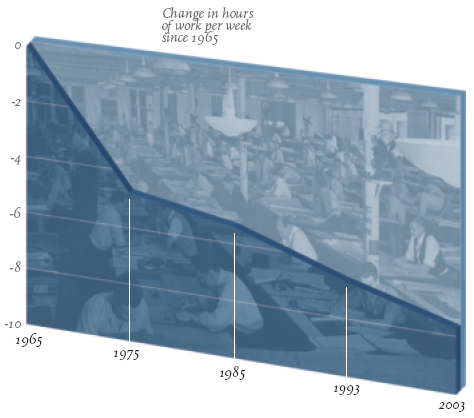|
||
      |
Fig.2
Lap of leisure
Americans may be eating breakfast on the way to the office and making conference calls from the beach, but they’re working less than they did 40 years ago. In a study of how American employees spend their time, Chicago economist Erik Hurst and Mark Aguiar at the Federal Reserve Bank of Boston found that between 1965 and 2003, leisure time for men increased by 7.9 hours per week and for women by six hours per week. Spare time rose across the board—for people single and married, with children and without. Those with a high-school diploma or less gained slightly more leisure time, and women worked fewer hours even as more of them entered the labor force.
Hurst and Aguiar analyzed detailed time-use diaries from the past four decades, and their definition of work included not only hours on the job but also time spent shopping, cooking, vacuuming, commuting, paying bills, and doing other chores. One element the leisure calculations left out: raising children. Hurst and Aguiar based their omission largely on a discontinuity in child-care measurements.
